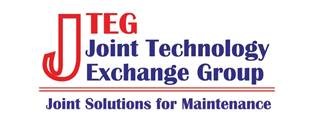Agenda
1300-1305: Welcome, Intro & Purpose – JTEG Principal Presentation
1305-1309: Administrative Notes – Debbie Lilu (NCMS)
1309-1330: Reverse Engineering (RE) Lab Update – Jonathan Jarnum (FRCE)
1330-1350: LiDAR Megaproject – Jason Bickford (NSWC) Presentation
1350-1410: 9D LADAR – Next Generation Technology for Reverse Engineering & 3D Scanning – Ron Hicks (API) Presentation
1410-1430: RE & Production of Near Net Shapes – Bobby Youssefi (Machina Labs)
1430-1450: SBIR Phase II 2D to 2D Digital Effort – Scott Gray (Elevate Systems)
1450-1500: Wrap-Up / Survey – Steve McKee (OSD-MR)
Minutes
Event: On 25 October 2022, the Joint Technology Exchange Group (JTEG), in coordination with the National Center for Manufacturing Sciences (NCMS), hosted a virtual forum on “Reverse Engineering, 3D Printing, and Prototyping”.
Purpose: The purpose of this forum was to discuss the challenges and solutions, research and development, and implementation of reverse engineering (RE), 3D printing, and prototyping capabilities in support of DoD sustainment.
Welcome: Joe Sparks, NAVAIR JTEG Principal, welcomed everyone to the forum and provided a brief introduction of the presenters and emphasized the significance, challenges and impact that RE, 3D printing, and prototyping related innovations have within the DoD sustainment community.
Administrative: This was a sizeable audience with 75 people attending the open forum. The presentations, along with questions and answers, were conducted through Zoom.Gov which provided a well-used chat capability for comments and Q&A.
LiDAR Megaproject – Jason Bickford and Patrick Violante (NSWC) discussed the FY20-22 3D scanning megaproject using LiDAR and other 3-D scanning technologies (side scan sonar, photogrammetry, videogrammetry, et al) as game-changing technologies for improving both installation cost and times by eliminating rework. The objectives include collecting/generating a high-quality complete data set of an operational surface combatant, capture enterprise ROI to transition & deploy tech, establish clear Navy direction for 3D Scanning (establish program requirements), and identify and explore future 3D scan data use cases. The described the enterprise vision to enable future use cases and presented a data roadmap.
9D LADAR – Next Generation Technology for Reverse Engineering & 3D Scanning – Ron Hicks (API) describes the patent-pending 9D LADAR as the world’s first interferometry-based non-contact measurement system incorporating Optical Frequency Chirping Interferometry (OFCI) technology. DYNAMIC 9D LADAR provides micron-level resolution while eliminating issues associated with surface reflectivity, slow data acquisition speeds, limited accuracies, restrictive incident angles, and susceptibility to production environment noise. The chirping laser-interferometer is 100X more sensitive than phase-detection. The micron accuracy is unaffected by surface reflectivity, material and incident angle and has the ability to “probe” into holes and geometric details. It uses an embedded iVision smart camera with digital zoom for ease of set up and part recognition, an advanced G-Hz controller for signal processing and high-speed computation. No external controller or heavy cables needed. Potential applications include measurement of aircraft for design compliance and damage, assessment gun barrel characterization, propeller shafts inspection, helicopter blade inspection, and automated and remote inspection.
Robotic Sheet Metal Forming for Agile and Flexible Manufacturing of Parts and Molds – Babak Raeisinia (Machina Labs) described capabilities in robotic forming, trimming, hole cutting, etc. He discussed and used a video to explain that robotic cells can be used to form parts, execute subsequent processes such as drilling, trimming, scanning and quality control, without any material or geometric-specific tooling all within the same cell. They stated they have the capability to change the design, scale, and material without and tooling, and presented examples of robotically formed components. They use flexible and geometry agnostic processing and a lean 3D scanning system which leads to traceable, reproducible, and resilient manufacturing.
SBIR Phase II 2D to 2D Digital Effort – Scott Gray (Elevate Systems) described the SBIR work they are doing concerning the adaptation of 2D-to-2D analysis and digital conversion platform for legacy Air Force technical data and drawings. Elevate has developed a robotic image capture system that creates professional-quality images of art with robotics, and AI/ML software capable of capturing, enhancing, and stitching thousands of images. Adaptations to the technology could address supply chain and sustainment challenges in working with technical data like engineering drawings.
Q&A – A Q&A occurred after each briefer finished their presentation. The slides cleared for public release will be posted on the JTEG website with these minutes.
Closing Comments: Steve McKee thanked the presenters and participants for their attendance and all the work being done to support RE, 3D printing, and prototyping innovations in support of DoD sustainment operations.
Action Items:
- Obtain copies of remaining cleared presentations once they are approved to post to a public website, and post to the JTEG website at https://jteg.ncms.org/.
Next JTEG Meeting: The next scheduled JTEG virtual forum is 29 November 2022, 1:00 – 3:00 pm EST. The topic is “Digital Maintenance / Point of Maintenance”.
POC this action is Ray Langlais, rlanglais@lmi.org, (571) 633-8019
